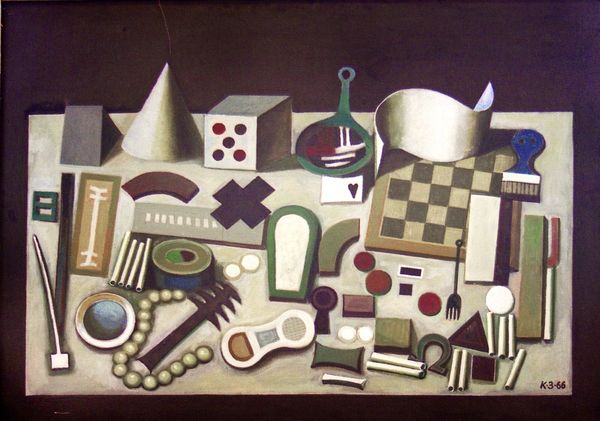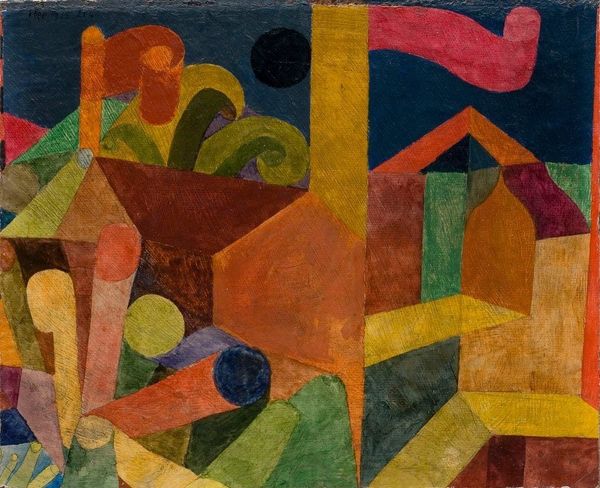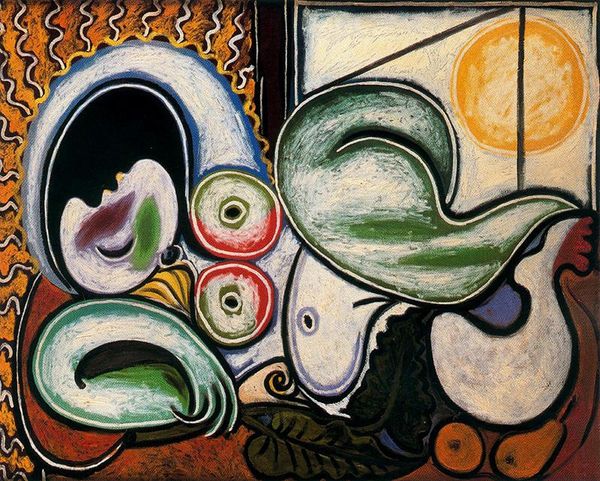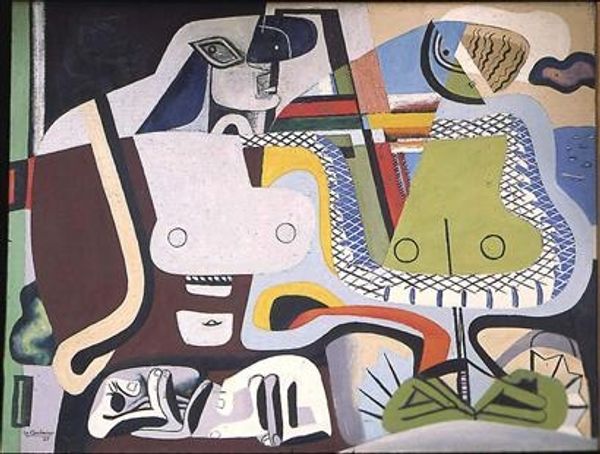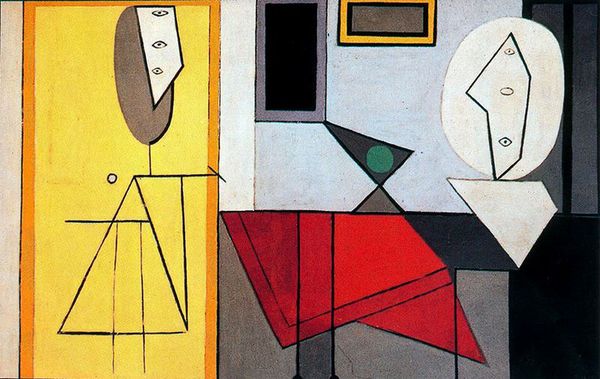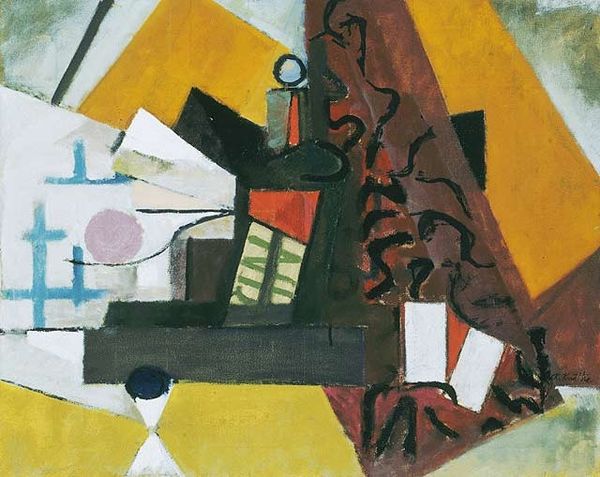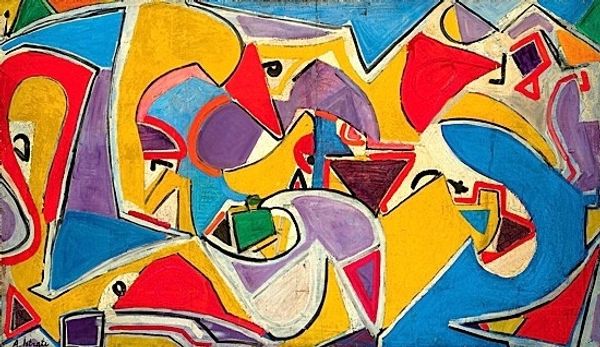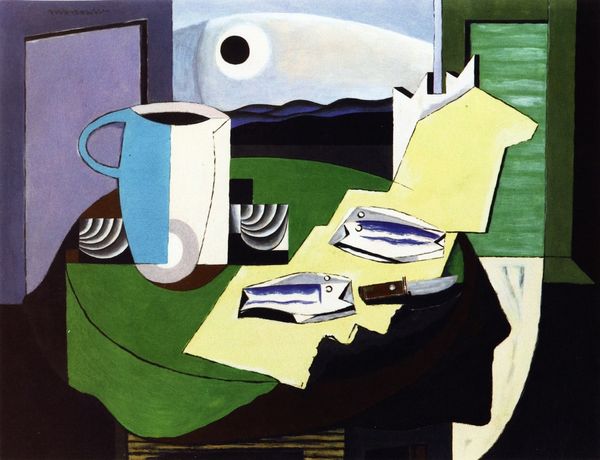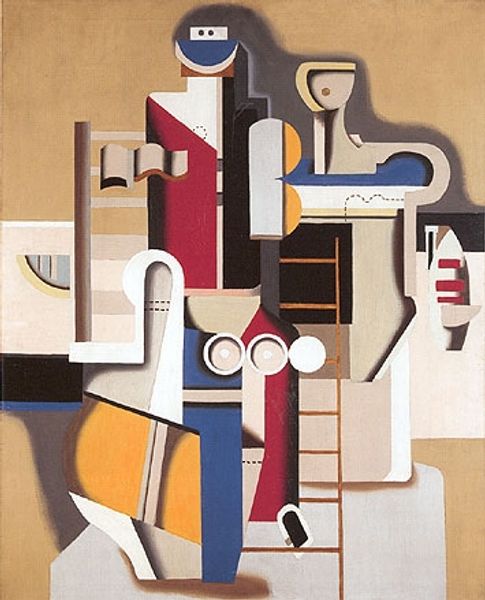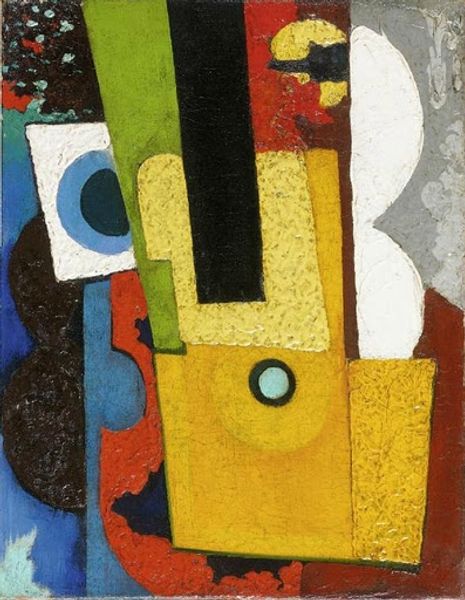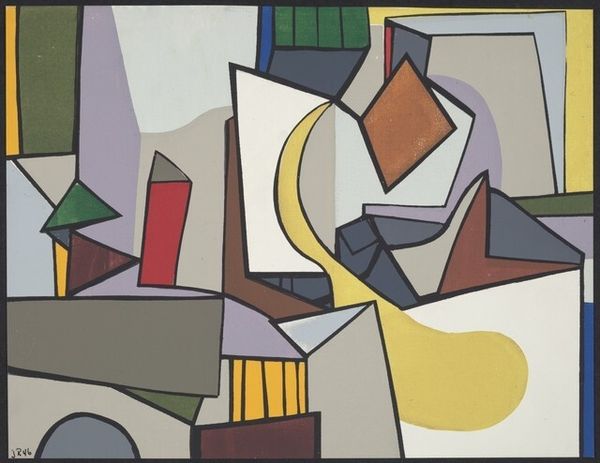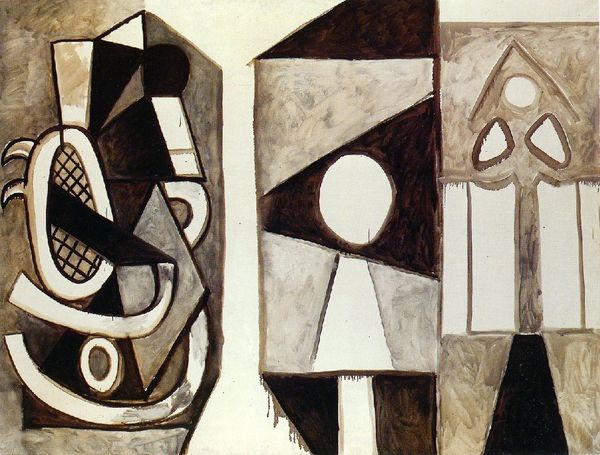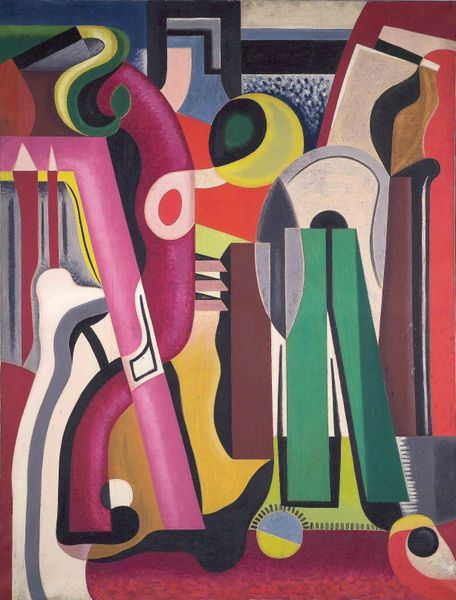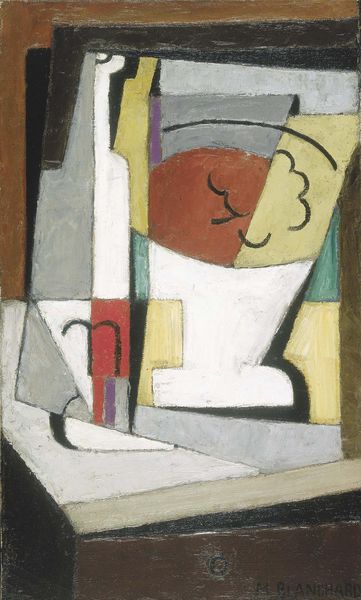
painting, acrylic-paint
#
painting
#
pop art
#
acrylic-paint
#
mural art
#
geometric
#
pop-art
#
modernism
Copyright: Karlo Zvirynsky,Fair Use
Curator: What strikes me most about this "Still Life" by Karlo Zvirynsky from 1965, painted with acrylics, is its calculated geometric disarray. Editor: It's… strangely unsettling, isn’t it? Like someone exploded a geometry set onto a very organised tablecloth. Curator: Perhaps, but within that perceived chaos, there's a clear structural framework. The relationship between shapes, their placement, the palette itself—it's all very deliberate. Looking at the artistic process in a wider context, the "tablecloth," as you called it, seems to stand for a surface created using domestic materials which served an aesthetic purpose: a crucial theme during the era. Editor: I concede to the order. I note the restricted use of the paint - you can really see how, within his methods, Zvirynsky plays with depth and shadows using shape juxtaposition and material texture. You wouldn't think basic geometry and careful planning could produce this kind of feeling - somewhat unsettling but yet calming, with very precise boundaries. Curator: And don't forget Zvirynsky's roots within Modernism. This abstraction, stripping down the objects to their purest forms is inherent. How do you see its place within Modernism? Editor: I'd say this still life moves beyond pure geometric abstraction—towards a symbolic reduction. Look at that checkerboard, those intersecting lines, the way those geometric elements repeat throughout the painting. These, beyond pure form, invoke tension and balance in a post-war society obsessed with consumption. A powerful commentary. Curator: Precisely. It pushes past conventional Pop Art and comments on contemporary consumer culture from Eastern Europe through a specific pictorial structure. I never grow tired of experiencing a familiar concept with a slightly disorienting interpretation of objects surrounding us. Editor: A valuable reminder that a deeper understanding of both intention and context leads to a better grasp of the composition itself. Thank you for elucidating the materials and cultural meaning!
Comments
No comments
Be the first to comment and join the conversation on the ultimate creative platform.
